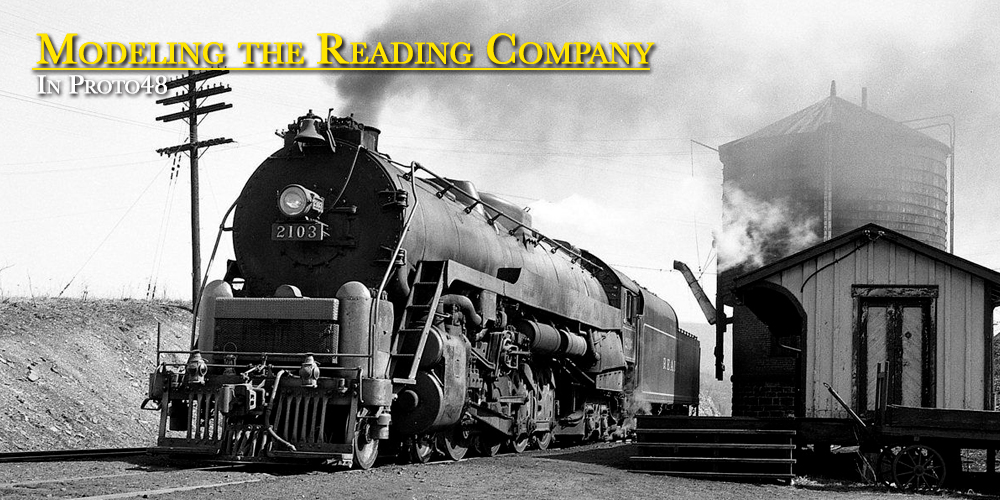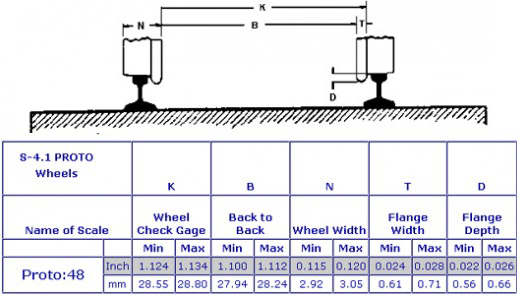What is Proto48?
That question has been a topic of debate with Proto48 modelers for a number of years. Basically there are two schools of thought on the matter. The one thought is that it is just a set of standards to correct the gauge mistake in O scale and also make the wheels close to the prototype in size. The other side of the debate thinks it’s more than just gauge, it’s really about finescale modeling throughout the model. Usually when one of these debates rise up it ends up in some foul words being exchanged, some hurt feelings and a few PO folks. None of this is good for anybody.
Lets step back and take a look at the history of Proto48. It has it’s origins in trying to make the gauge and wheel width more accurately depict the prototype. A very nice history of Proto48 is presented well on the Proto48.org website. But one could also argue that it was understood that these guys were modeling to finescale standards with the rest of their models, they just got tired of placing out of scale trucks on their models.
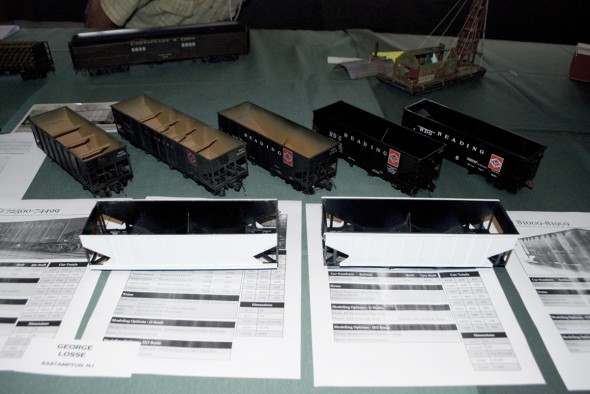
My Experience with Proto48
I am proud to be called a rivet counter. I actually have counted rivets on my models and on the prototype drawings I have done for RMC. When I first converted to 1/4 inch modeling, the realization that my models had trucks with the incorrect gauge bothered me. Then I heard about Proto48, and I had to be a part of it.
After more than ten years of happy Proto48 modeling, I made the well meaning mistake of joining a local model railroad club. Their pushing and prodding convinced me to “just change out my trucks” on my proto48 models and “I could run my models on their layout.”
My model railroad club experience has given me a lot of things (not all good). For this conversation, let’s just say it made me realize that I was not happy with my same models when they had O scale trucks under them. Even though my models had the same level of detail (because they were actually the same models). I was not satisfied with their appearance. I responded better to them with Proto48 trucks under them. After leaving the club, it did take me a few years to figure this out.
Modeling in regular O scale is much easier than modeling Proto48. Open the box and place the model on the rails. Instant gratification at it’s best. You don’t have to convert, upgrade or do anything to your models. Or do you?
I started measuring and comparing the models being produced against the NMRA Standards. I found out that not every manufacturer builds their models to the same set of standards. Once I began to see that almost none of the models were within all the NMRA Standards and that they needed to be modified anyway, it made even more sense to model in Proto48 again.
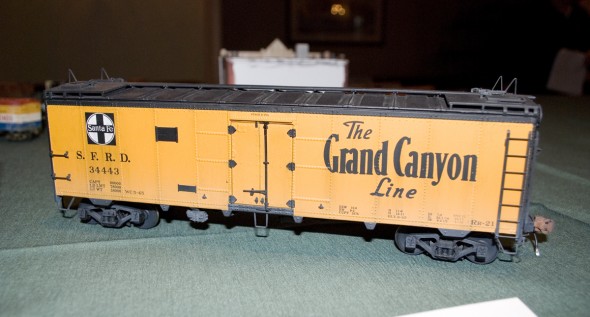
Which Proto48 Camp Am I In?
I always believed I fell close to gauge side of the debate. I guess that had more to do with hearing guys quote Proto48 standards for one thing or another to manufacturers. None of these “quoted standards” existed. Only the “Gauge and Wheel Standards” exist. So I took more of the stand that Proto48 is just a wheel and track standard and a lot of ego thrown in also.
As I continue to focus my efforts to model the Reading, I’m finding that I’m beginning to lean to the finescale side of the fence. My modeling belief has always been that no mater what the width the gauge, the model should be detailed as accurately as time, prototype information, modeling skills and money permits.
The NMRA Proto48 standards are just a set of track and wheel standards. Modeling in Proto48 has opened my eyes to what I thought O Scale could and should be when I first converted to the scale. It has to do with making every detail as accurate and well as you can. That means research of the prototype, mastering new modeling techniques and generally just pushing your modeling skills beyond their current limits.
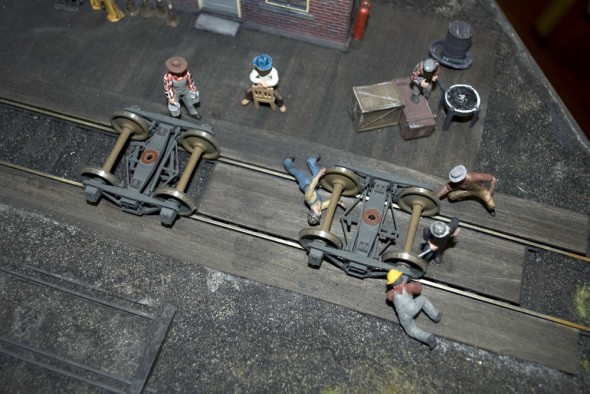
Is Proto48 Just a Set of Track Standards or Is Proto48 Finescale Modeling?
I don’t think the modelers on either side of the debate are wrong. What we have are just different approaches to modeling. The choices a modeler makes about the detail level of their models does have an effect on choices available for their layout. But these modeling choices are personal choices, and not a mandate of Proto48.
For me, I can model in Proto48 without modeling to finescale standards. I have found out that I can’t model to finescale standards without modeling in Proto48.
